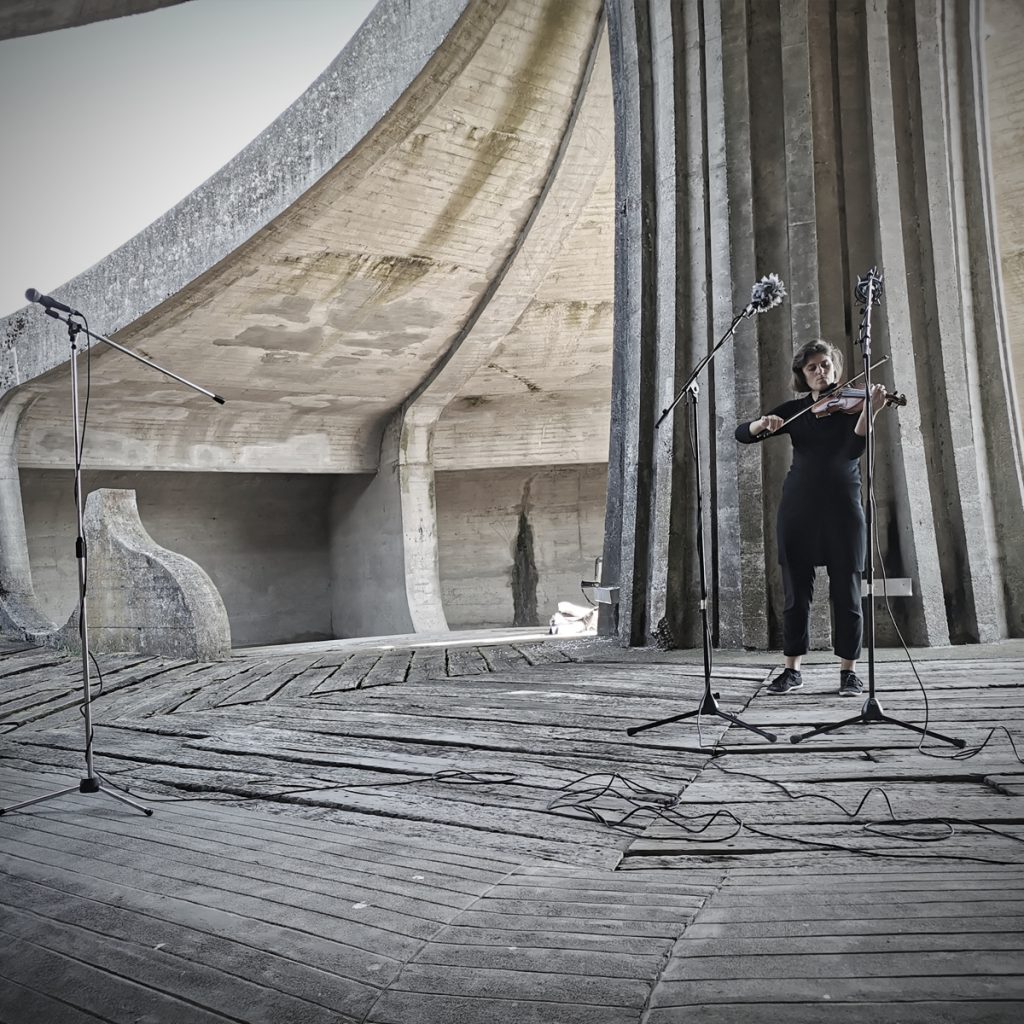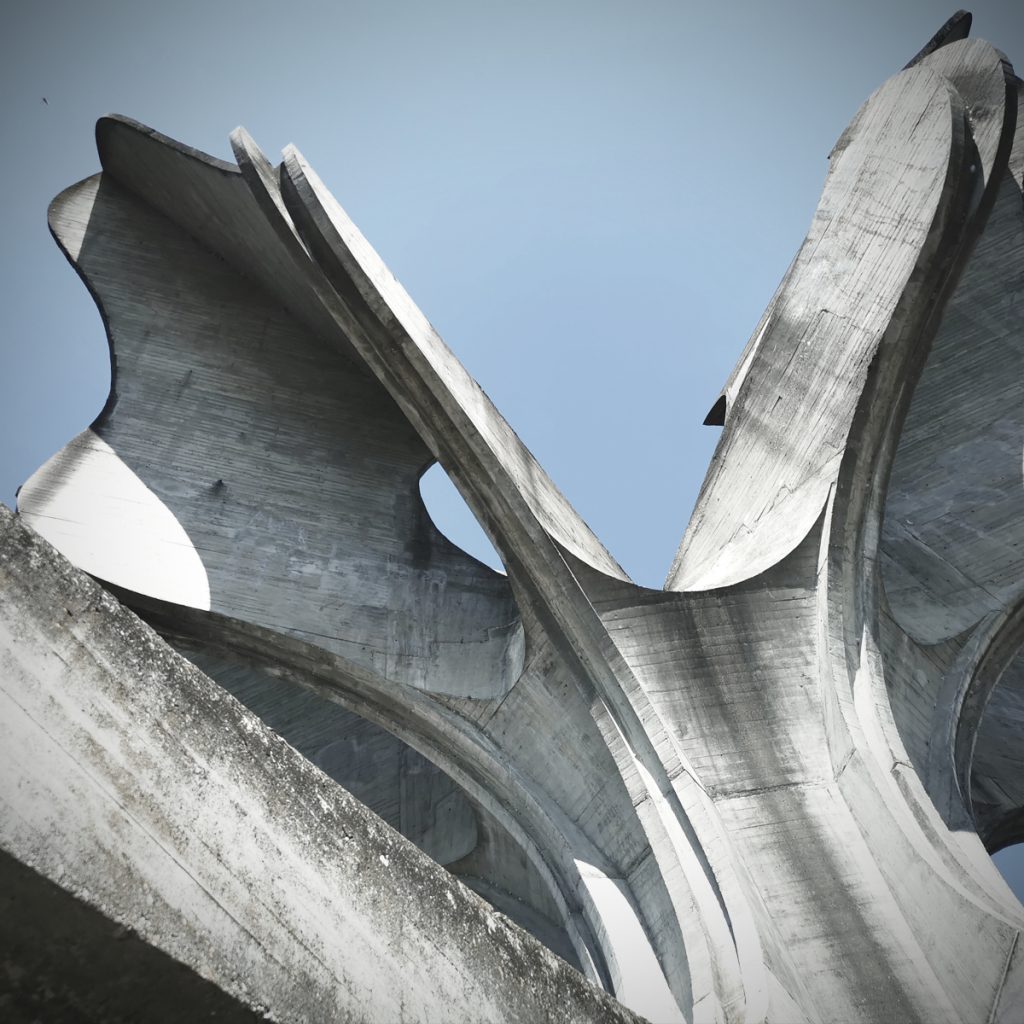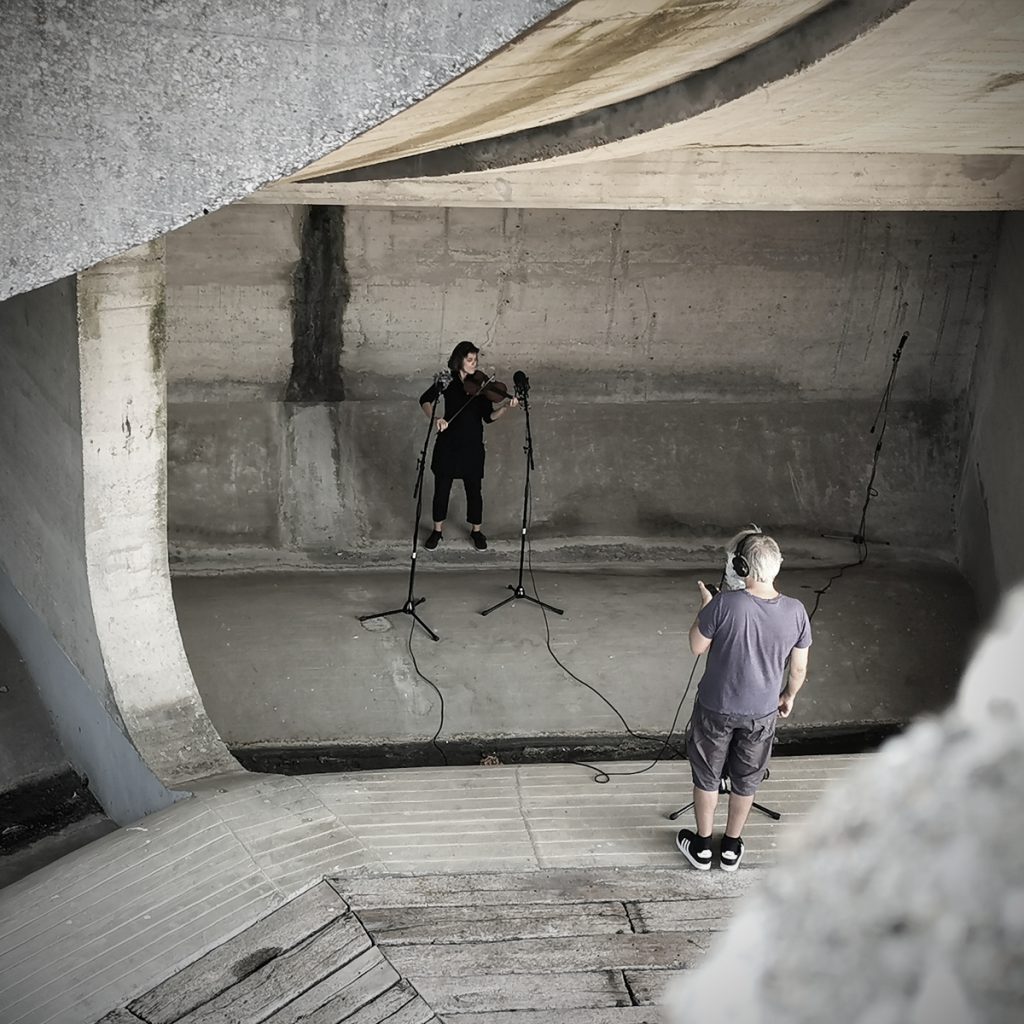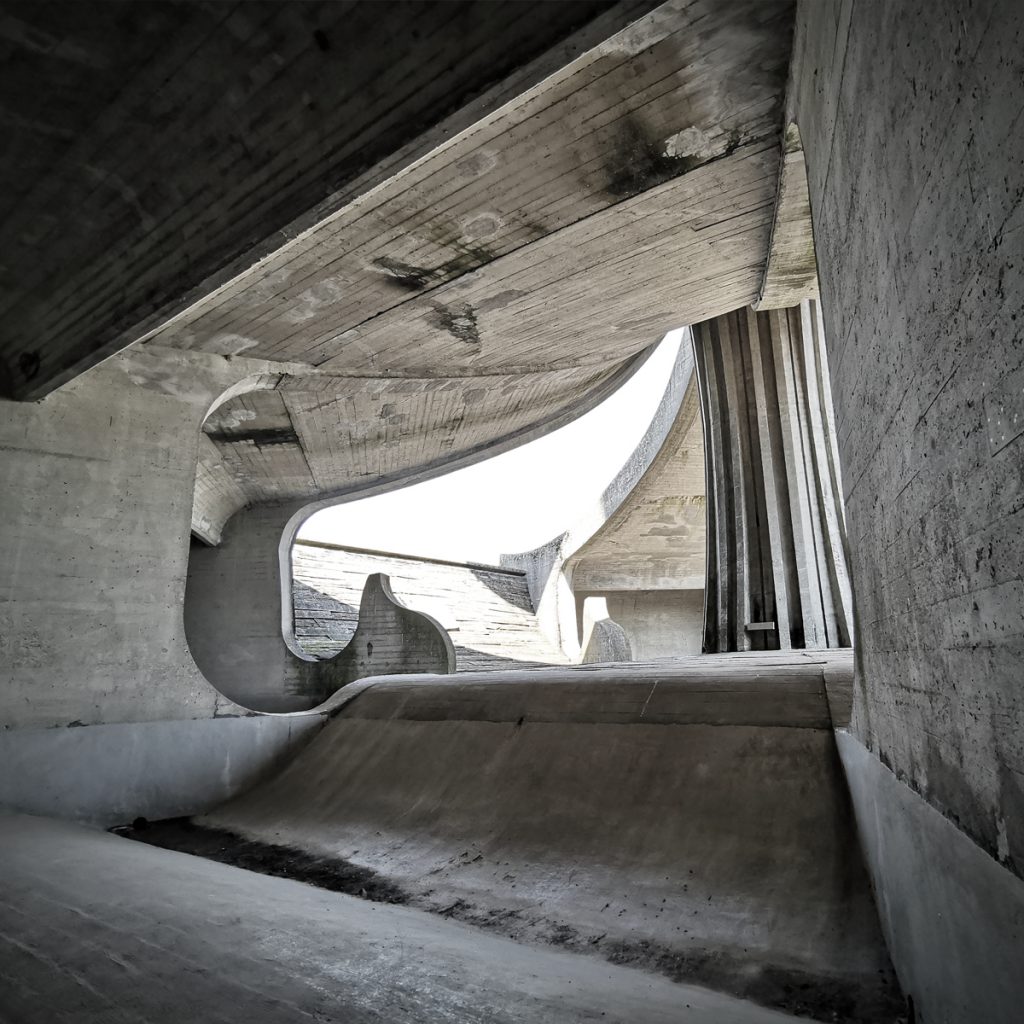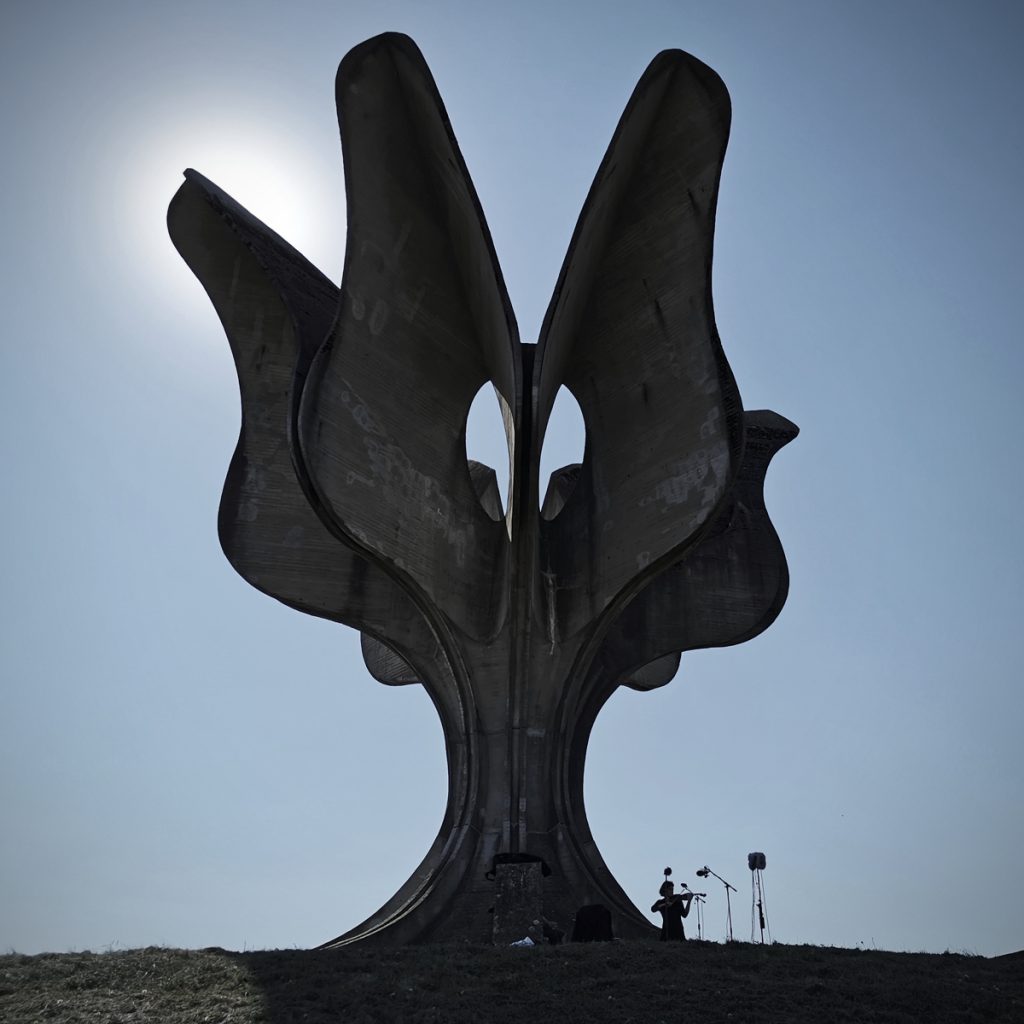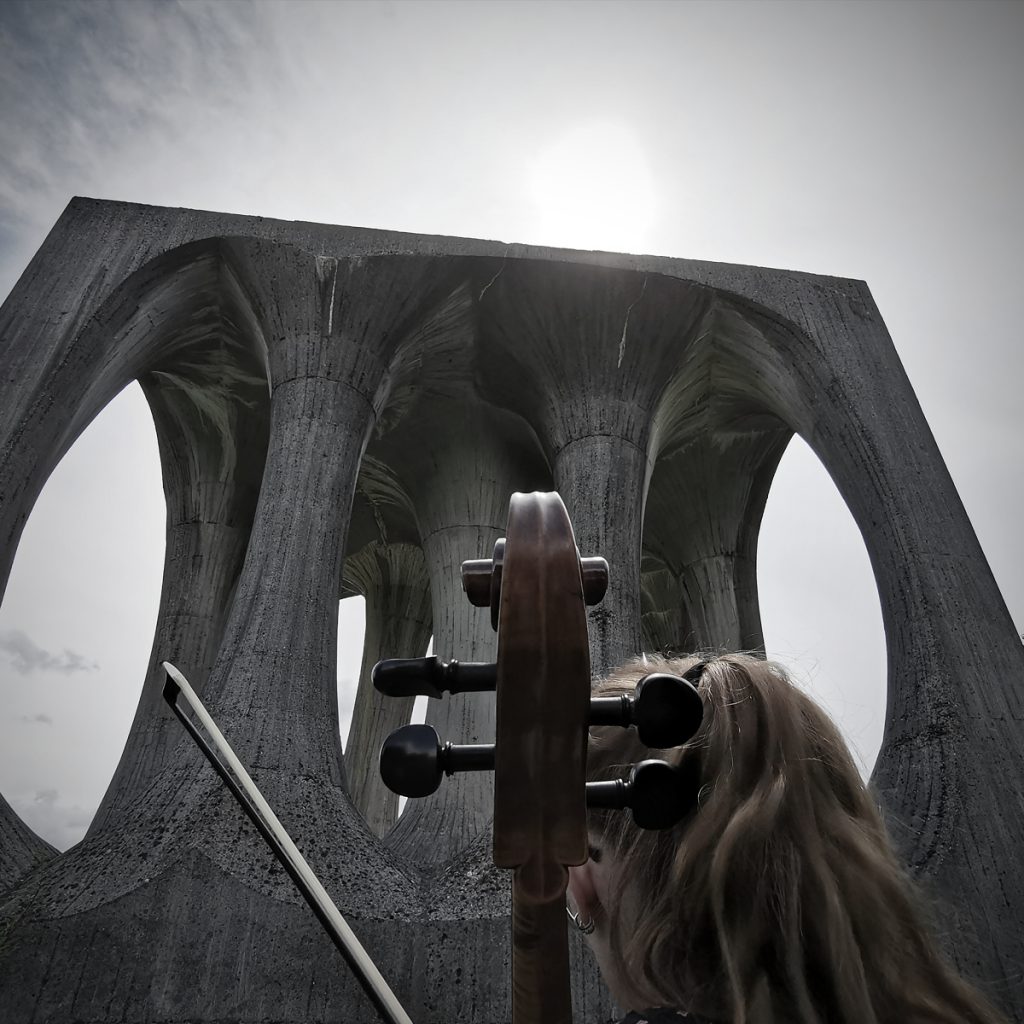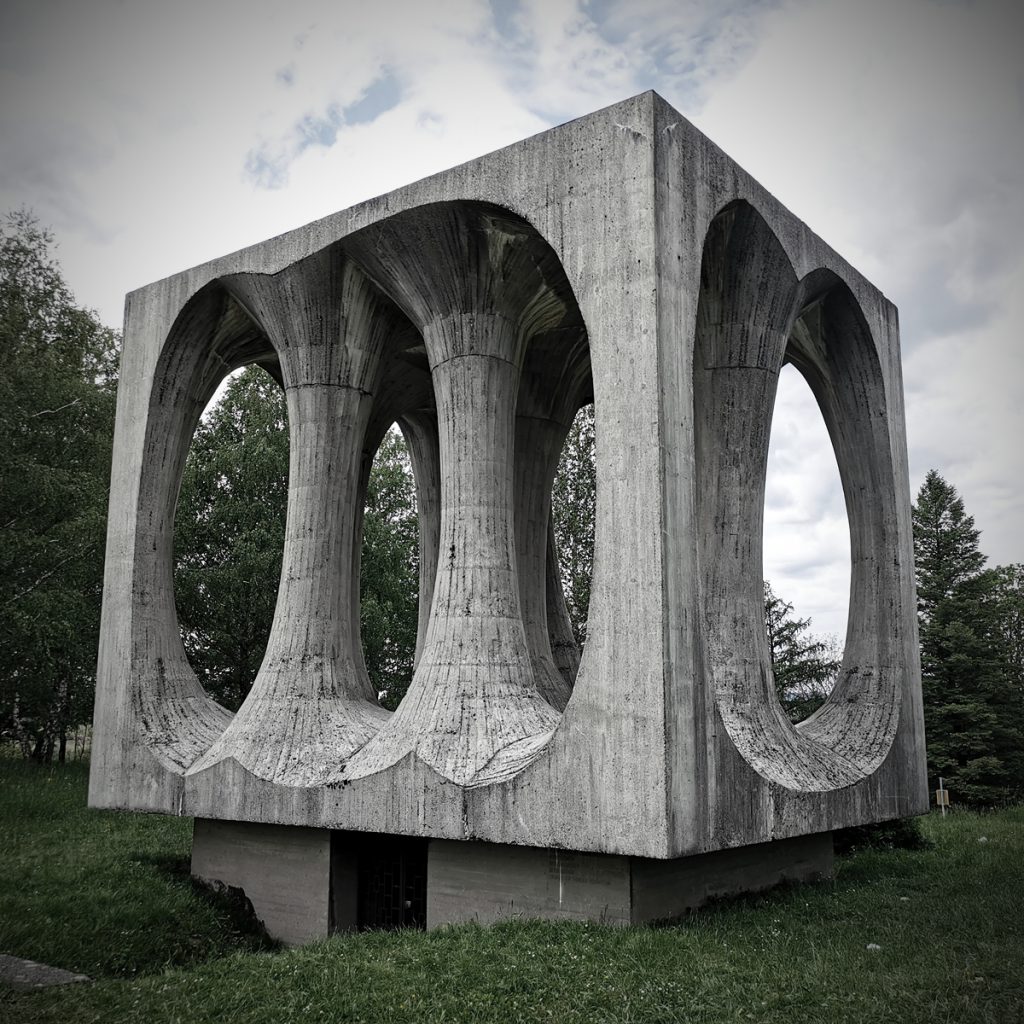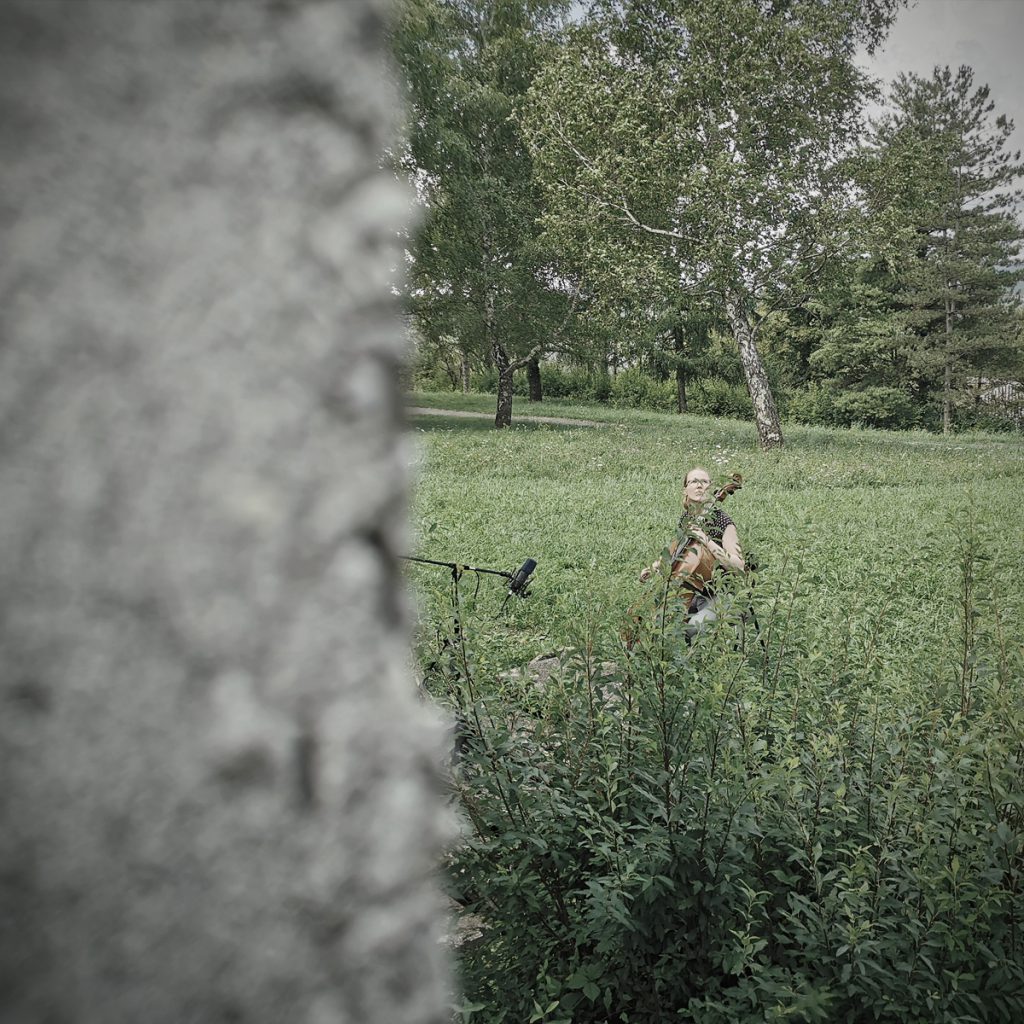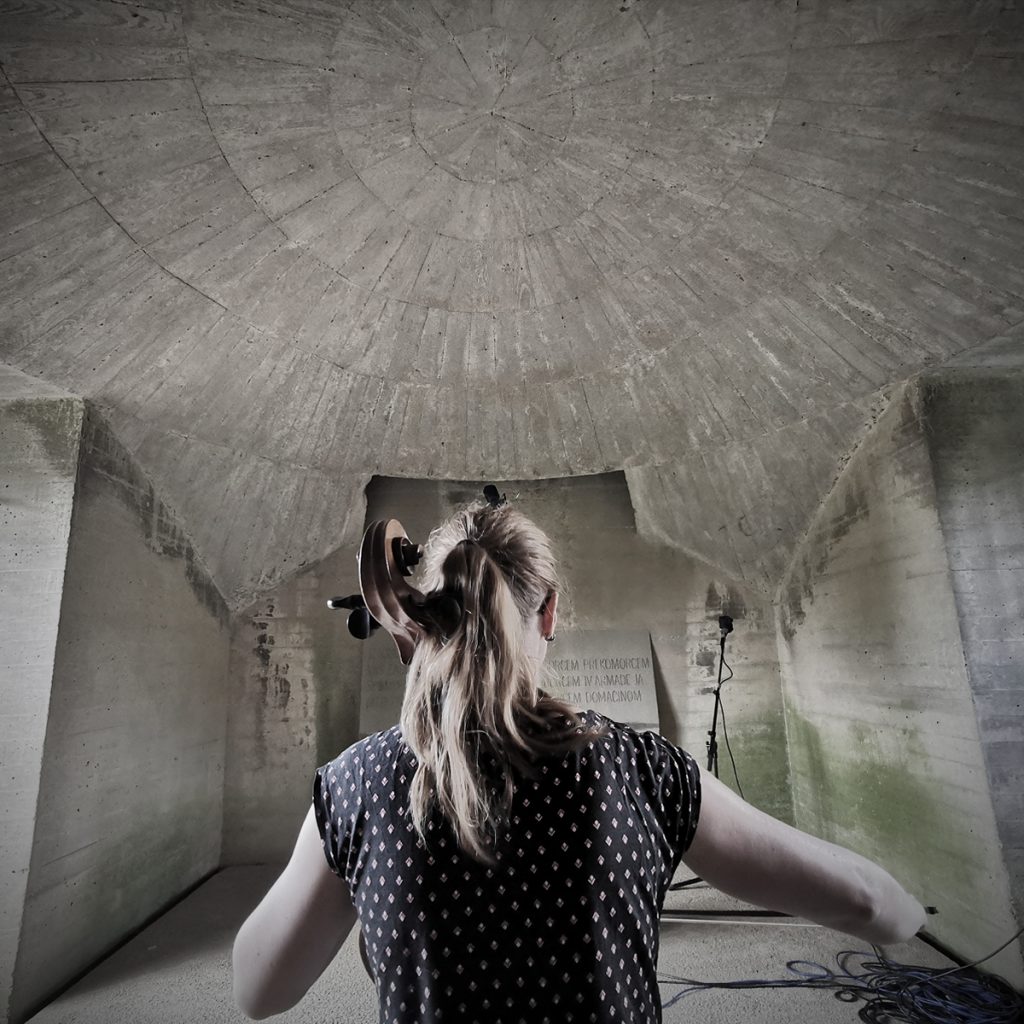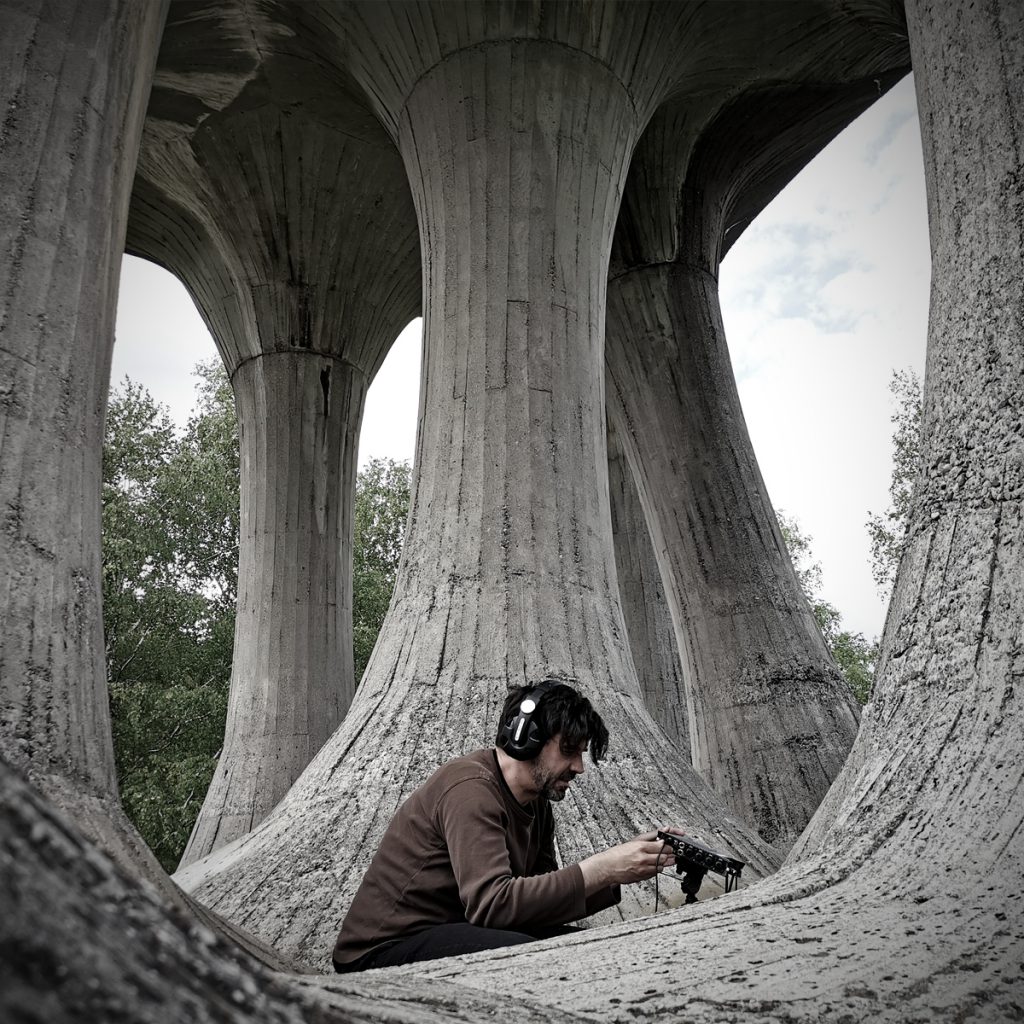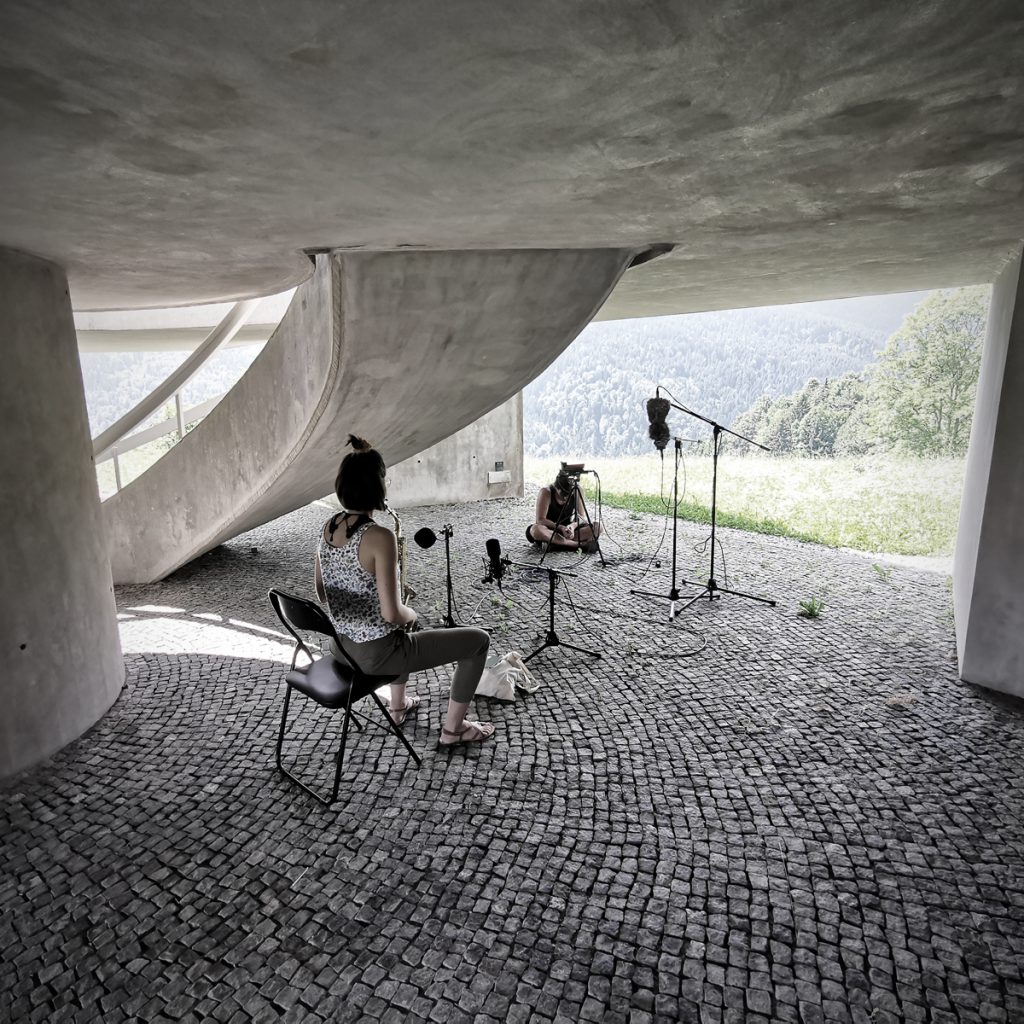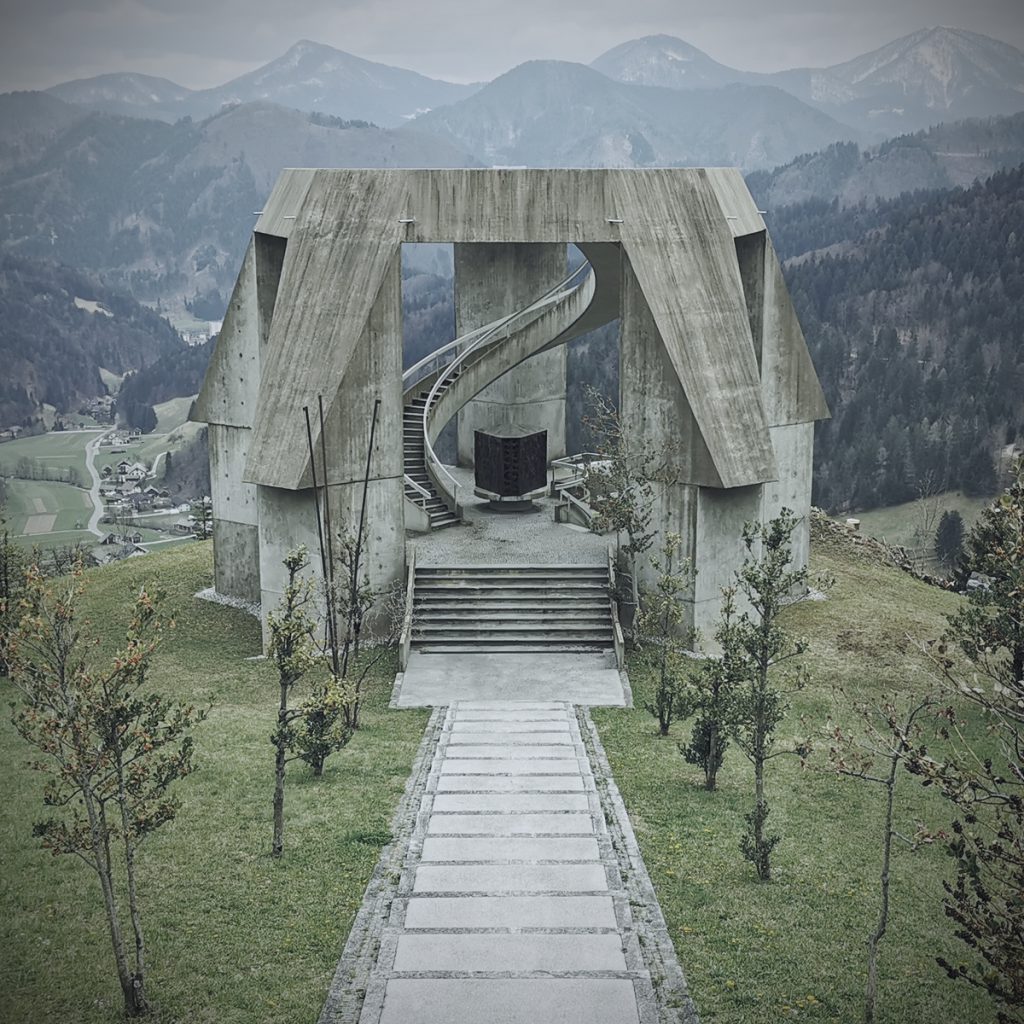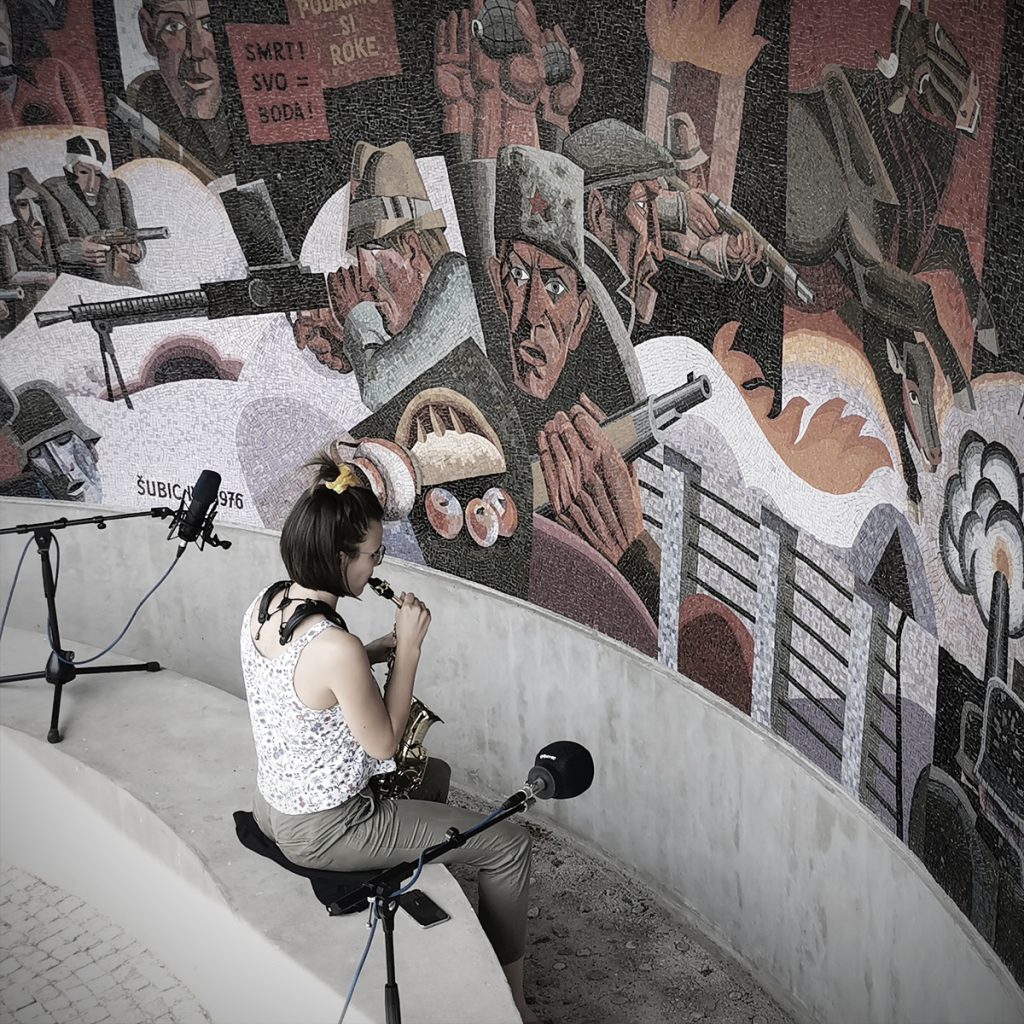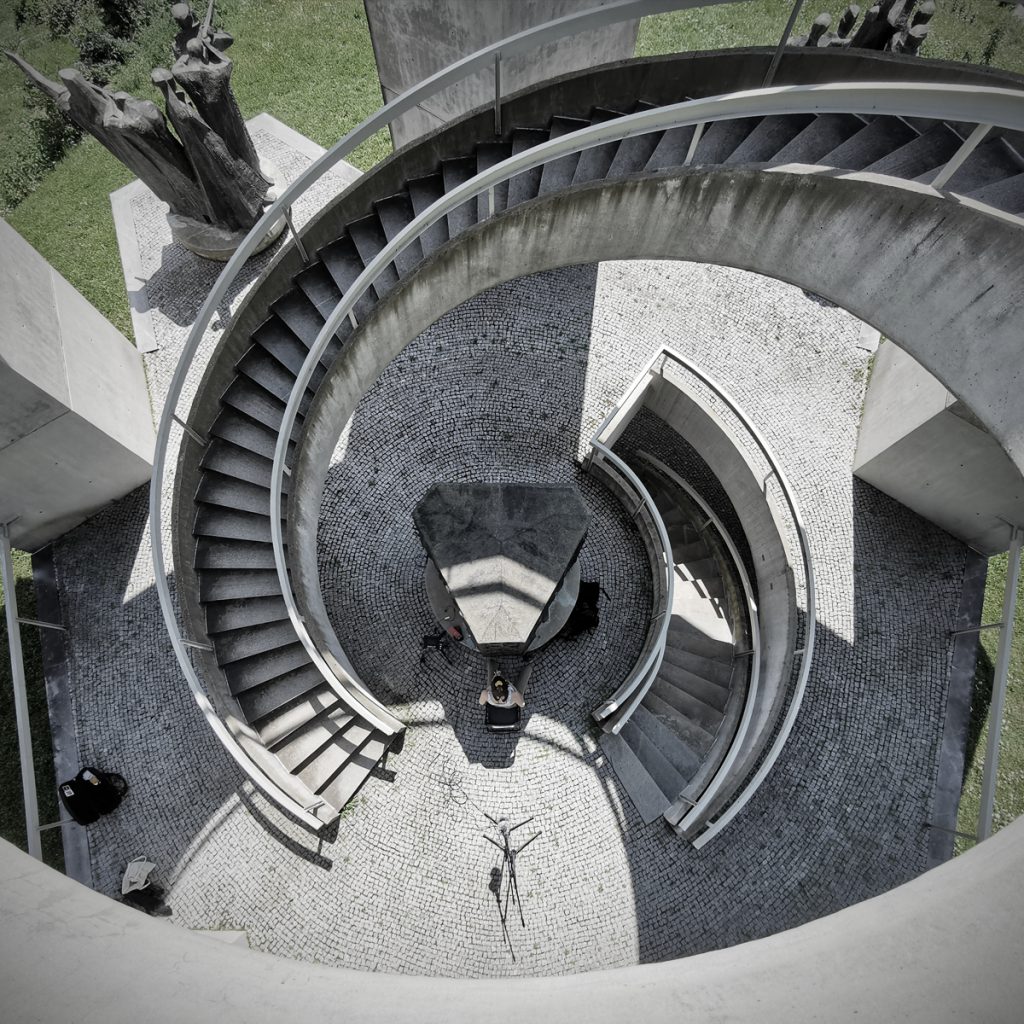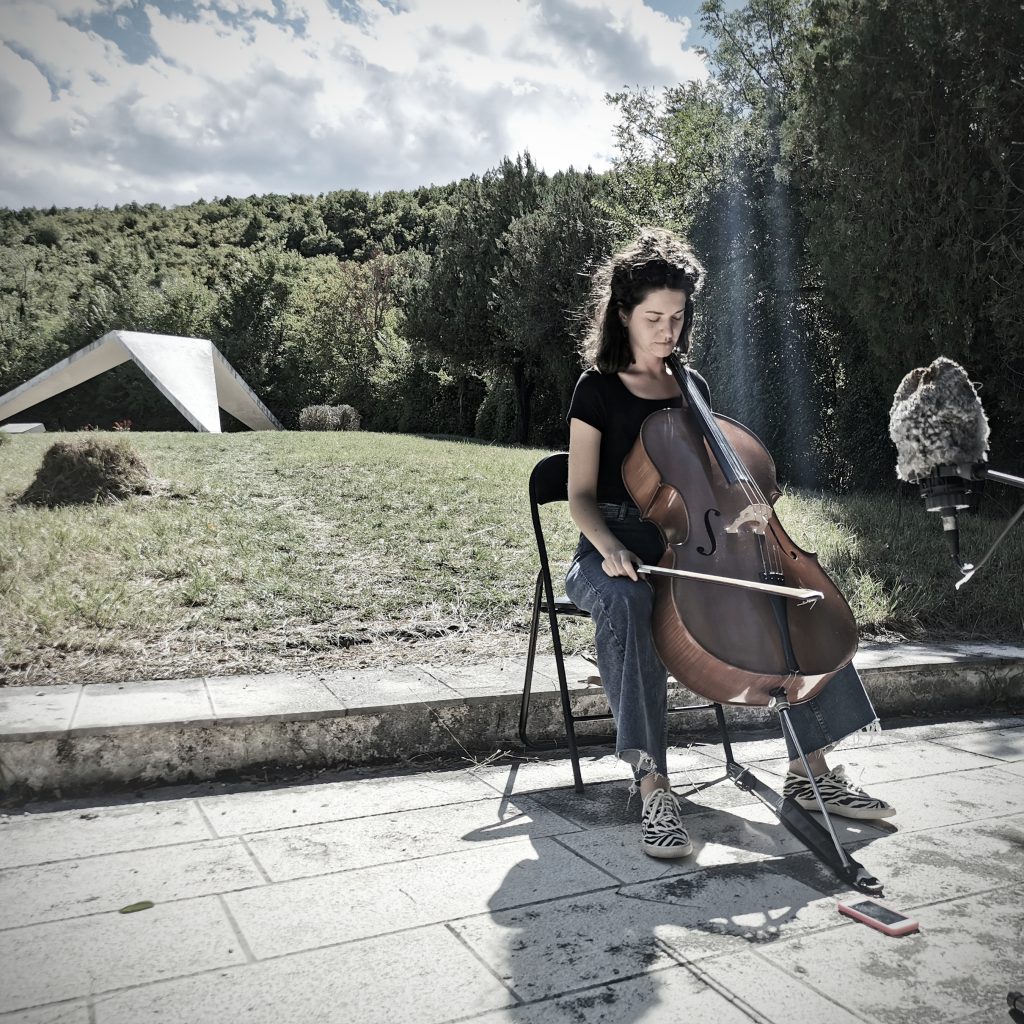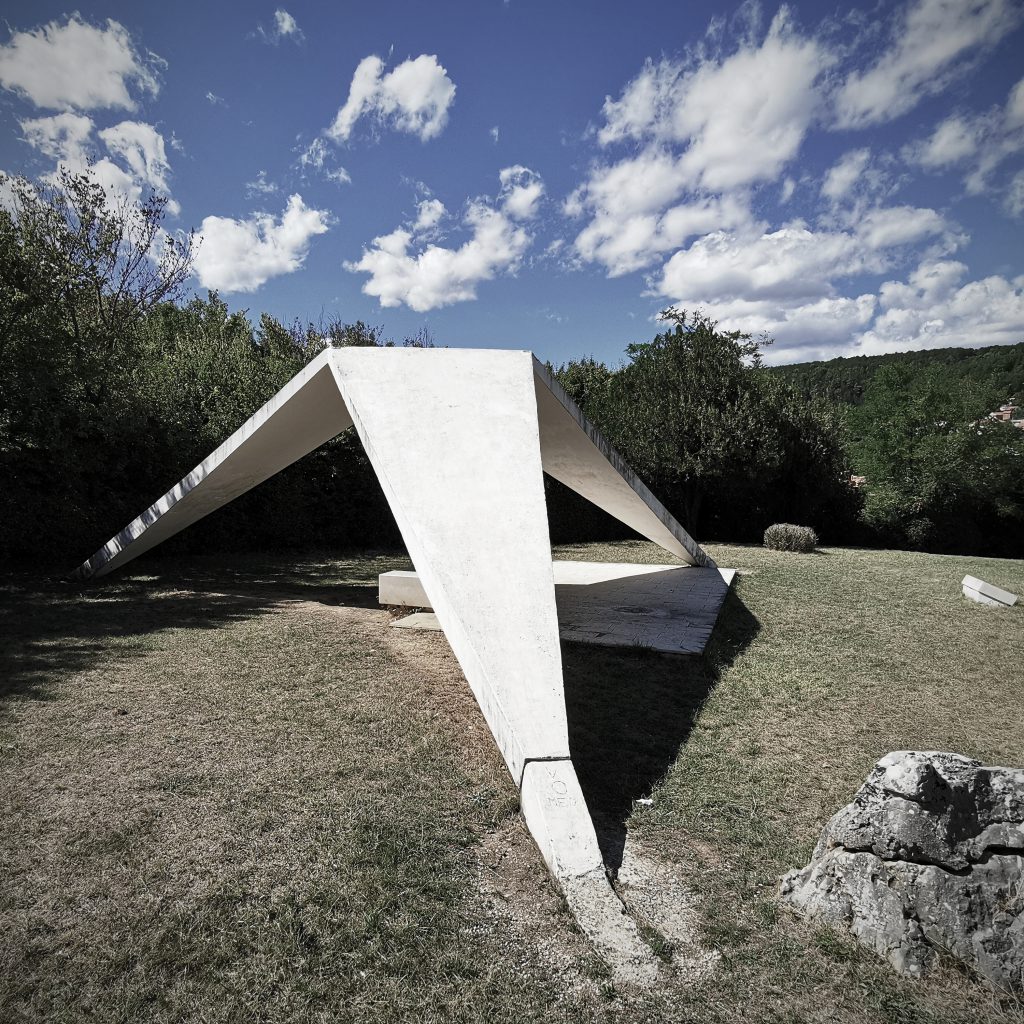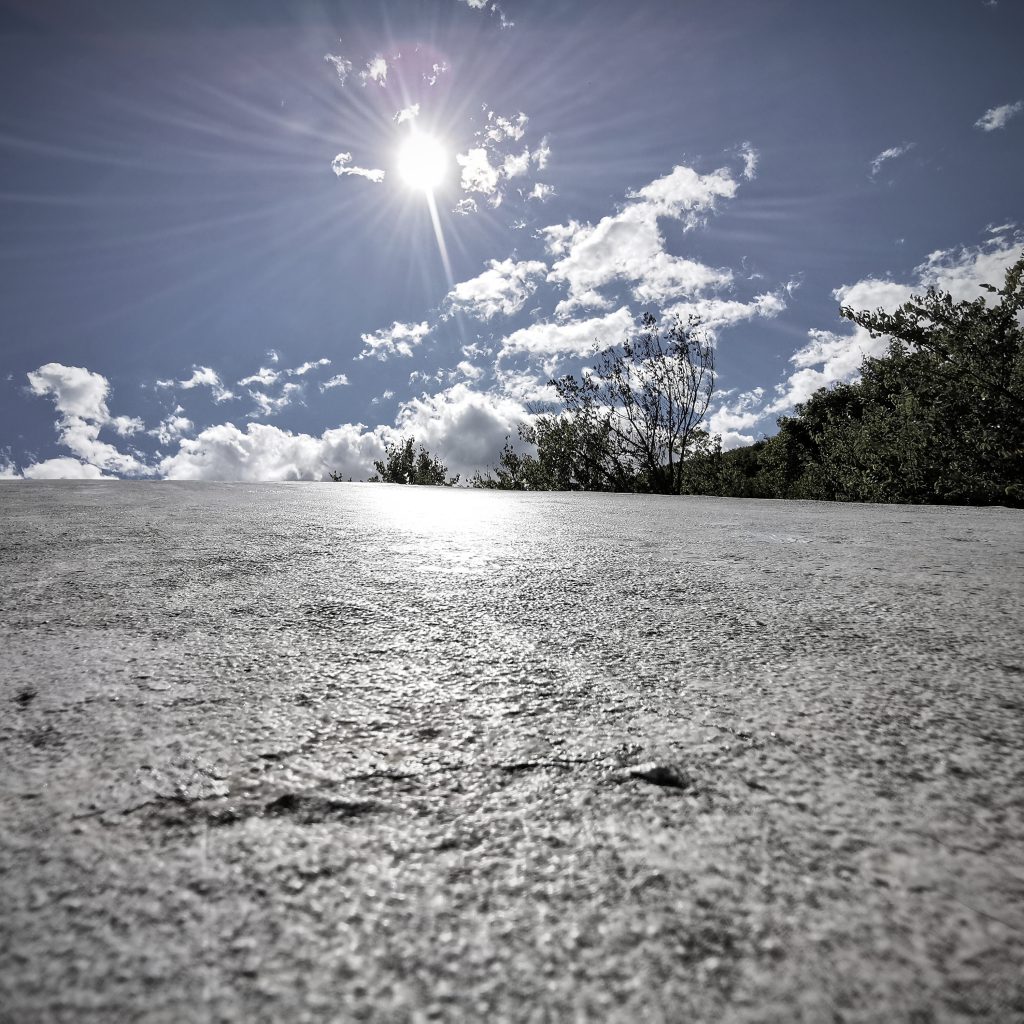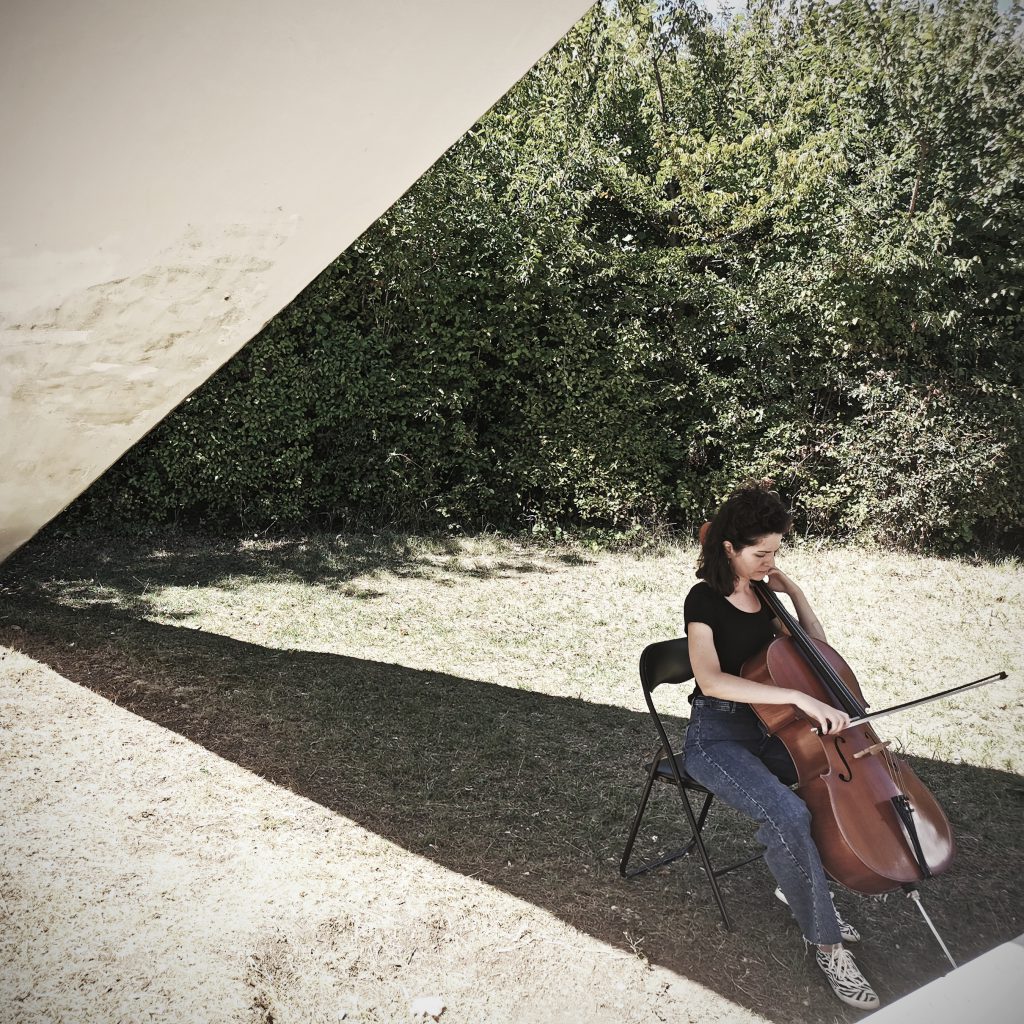Introduction
While the striking still enigmatic visuality of the former Socialist Federal Republic of Yugoslavia's abstract brutalist monuments has been well-documented in recent years, hardly we know anything about their sounding aspects. Most of these spomeniks (original form in plural spomenici, meaning memorials in Serbo-Croatian and Slovenian languages, derived from the root spomen- that means memory) have hollow parts that serve as resonant spaces. The most characteristic materials these historical artefacts were made of are poured concrete and rebar, or steel frame with metallic covering plates. Materials that certainly influence or have audible modifying features to sounds. Curiously, so far, nobody has examined, documented thoroughly and published these enduring landscape objects as acoustic spaces. Besides the spomeniks' direct sonic aspects, little we know about their surrounding acoustic environments. Majority of these unique and individual monuments were constructed in remote rural locations, usually far from any urbanization, while some of them were erected in city centres or suburbs, or near villages – all presuming a highly diverse sounding ambiance.
However spomeniks functioned – and some of them still function – as World War II memorials with clear anti-fascist connotation, and from the mid-50s until the late 70s as the groundworks and materialized emblems of Josip Broz Tito's utopian idea of a strong and united Yugoslavian state with the high-sounding slogan 'brotherhood and unity'; we regard these abstract but undisputedly iconic modernist constructions as mere architectural works of art. Peeling off all possible political and ideological layers, it is not our task to judge whether these monuments are useless politicised relics of the former Yugoslavia's communist past, or significant historical artefacts that still need admiration. As a record label we are merely interested in sounds.
In 2021, Inexhaustible Editions sublabel Edition FriForma started a long-term research, recording and publishing project to explore and reveal the sonic attributes of spomeniks of the former Yugoslavia (those now can be found in Slovenia, Croatia, Bosnia and Herzegovina, Serbia, Montenegro, Kosovo, and in North Macedonia) by asking local instrumentalists – mainly young but remarkably talented professional musicians working locally or internationally on the fields of free improvised or contemporary composed music – to play sounds on-site, and to find the most responsive or fascinating sounding parts of the monuments. Besides the intentional sounds produced by musical instruments, we intent to document the immediate surroundig's unintentional sounds as well via environmental recordings. Each year we plan to visit, examine and reflect on at least three or four monuments through field trips, recording sessions and eventually, audio publications. By now, we have gathered more than twenty locations with emblematic spomeniks that are relevant to our Sounding Spomenik project.
We invite you to visit this page and the space below from time to time for updates on the project; we are going to share texts, photo galleries and videos about the development of this ambitious and presumably adventurous research and publishing work on this inequitably unrevealed subject.
However spomeniks functioned – and some of them still function – as World War II memorials with clear anti-fascist connotation, and from the mid-50s until the late 70s as the groundworks and materialized emblems of Josip Broz Tito's utopian idea of a strong and united Yugoslavian state with the high-sounding slogan 'brotherhood and unity'; we regard these abstract but undisputedly iconic modernist constructions as mere architectural works of art. Peeling off all possible political and ideological layers, it is not our task to judge whether these monuments are useless politicised relics of the former Yugoslavia's communist past, or significant historical artefacts that still need admiration. As a record label we are merely interested in sounds.
In 2021, Inexhaustible Editions sublabel Edition FriForma started a long-term research, recording and publishing project to explore and reveal the sonic attributes of spomeniks of the former Yugoslavia (those now can be found in Slovenia, Croatia, Bosnia and Herzegovina, Serbia, Montenegro, Kosovo, and in North Macedonia) by asking local instrumentalists – mainly young but remarkably talented professional musicians working locally or internationally on the fields of free improvised or contemporary composed music – to play sounds on-site, and to find the most responsive or fascinating sounding parts of the monuments. Besides the intentional sounds produced by musical instruments, we intent to document the immediate surroundig's unintentional sounds as well via environmental recordings. Each year we plan to visit, examine and reflect on at least three or four monuments through field trips, recording sessions and eventually, audio publications. By now, we have gathered more than twenty locations with emblematic spomeniks that are relevant to our Sounding Spomenik project.
We invite you to visit this page and the space below from time to time for updates on the project; we are going to share texts, photo galleries and videos about the development of this ambitious and presumably adventurous research and publishing work on this inequitably unrevealed subject.
László Juhász
April 2021
Our compasses
· Spomenikdatabase.org, edited and regularly updated by Donald Niebyl
· Donald Niebyl – Spomenik Monument Database (FUEL, 2018)
· Jan Kempenaers & Wilem Jan Neutelings – Spomenik (Roma Publications, 2010)
· Martino Stierli & Vladimir Kulić – Toward A Concrete Utopia: Architecture In Yugoslavia, 1948-1980 (MoMA, 2018)
· Martino Stierli & Vladimir Kulić – Bogdanović By Bogdanović: Yugoslav Memorials Through The Eyes Of Their Architect (MoMA, 2018)
· Friedrich Achleitner – A Flower For The Dead: The Memorials Of Bogdan Bogdanović (Park Books, 2017)
· Jonathan 'Jonk' Jimenez – Spomeniks (Carpet Bombing Culture, 2018)
· Vladimir Kulić, Maroje Mrduljaš & Wolfgang Thaler – Modernism In-between: The Mediatory Architectures Of Socialist Yugoslavia (JOVIS, 2018)
· Peter Chadwick – This Brutal World (Phaidon, 2016)
· Matt Gibberd & Albert Hill – Ornament Is Crime: Modernist Architecture (Phaidon, 2017)
· Miloš Kosec, Neja Tomšič & Martin Bricelj Baraga – Nonument (MoTA, 2020)
· Olja Triaška Stefanović – Brotherhood And Unity (Academy Of Fine Arts And Design, 2020)
· A Second World (directed by Ruben Woodin Dechamps & Oscar Hudson, 19 mins., 2014)
· First And Last Men (directed by Jóhann Jóhannsson, 70 mins., 2020)
· Donald Niebyl – Spomenik Monument Database (FUEL, 2018)
· Jan Kempenaers & Wilem Jan Neutelings – Spomenik (Roma Publications, 2010)
· Martino Stierli & Vladimir Kulić – Toward A Concrete Utopia: Architecture In Yugoslavia, 1948-1980 (MoMA, 2018)
· Martino Stierli & Vladimir Kulić – Bogdanović By Bogdanović: Yugoslav Memorials Through The Eyes Of Their Architect (MoMA, 2018)
· Friedrich Achleitner – A Flower For The Dead: The Memorials Of Bogdan Bogdanović (Park Books, 2017)
· Jonathan 'Jonk' Jimenez – Spomeniks (Carpet Bombing Culture, 2018)
· Vladimir Kulić, Maroje Mrduljaš & Wolfgang Thaler – Modernism In-between: The Mediatory Architectures Of Socialist Yugoslavia (JOVIS, 2018)
· Peter Chadwick – This Brutal World (Phaidon, 2016)
· Matt Gibberd & Albert Hill – Ornament Is Crime: Modernist Architecture (Phaidon, 2017)
· Miloš Kosec, Neja Tomšič & Martin Bricelj Baraga – Nonument (MoTA, 2020)
· Olja Triaška Stefanović – Brotherhood And Unity (Academy Of Fine Arts And Design, 2020)
· A Second World (directed by Ruben Woodin Dechamps & Oscar Hudson, 19 mins., 2014)
· First And Last Men (directed by Jóhann Jóhannsson, 70 mins., 2020)
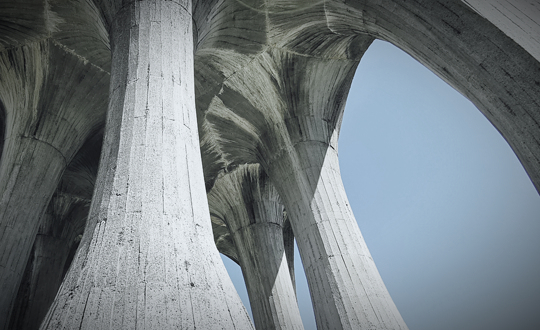
Locations / musicians '25
 Kruševo (designed by architect Iskra Grabul and sculptor Jordan Grabul; completed in 1974)
Kruševo (designed by architect Iskra Grabul and sculptor Jordan Grabul; completed in 1974)Participating musician: Macedonian cross-disciplinary artist Sašo Puckovski
 Petrova Gora (designed by architect Berislav Šerbetić and sculptor Vojin Bakić; completed in 1981)
Petrova Gora (designed by architect Berislav Šerbetić and sculptor Vojin Bakić; completed in 1981)Participating musician: Croatian saxophonist Arijan Mačak
 Kavadarci (designed by architect Peter Muličkoski; completed in 1976)
Kavadarci (designed by architect Peter Muličkoski; completed in 1976)Participating musician: Macedonian pianist Pandelina Atanasova
Locations / musicians '24
 Čačak (designed by architect Bogdan Bogdanović; completed in 1980)
Čačak (designed by architect Bogdan Bogdanović; completed in 1980)Participating musician: Serbian harpist Milana Zarić ✓
 Sisak (designed by sculptor Želimir Janeš; completed in 1981)
Sisak (designed by sculptor Želimir Janeš; completed in 1981)Participating musician: Croatian double bassist Ivar Roban Križić
 Popina (designed by architect Bogdan Bogdanović; completed in 1981)
Popina (designed by architect Bogdan Bogdanović; completed in 1981)Participating musician: Serbian violinist Manja Ristić ✓
Locations / musicians '21
 Jasenovac (designed by architect Bogdan Bogdanović; completed in 1966)
Jasenovac (designed by architect Bogdan Bogdanović; completed in 1966)Participating musician: Croatian violinist Tena Novak ✓
 Ilirska Bistrica (designed by architect Živa Baraga-Moškon and sculptor Janez Lenassi; completed in 1965)
Ilirska Bistrica (designed by architect Živa Baraga-Moškon and sculptor Janez Lenassi; completed in 1965)Participating musician: Slovenian cellist Tadeja Žele ✓
 Dražgoše (designed by architect Boris Kobe and sculptor Stojan Batič; completed in 1976)
Dražgoše (designed by architect Boris Kobe and sculptor Stojan Batič; completed in 1976)Participating musician: Slovenian saxophonist Vida Vatovec ✓
 Sinj (designed by architect Vuko Bombardelli; completed in 1962)
Sinj (designed by architect Vuko Bombardelli; completed in 1962)Participating musician: Croatian cellist Lucija Gregov ✓
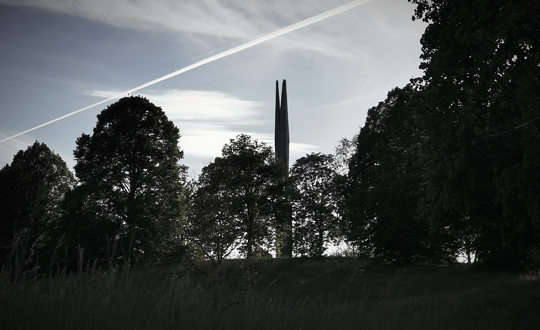
Sounding Spomenik editions
SPRING 2025 / FALL 2023


